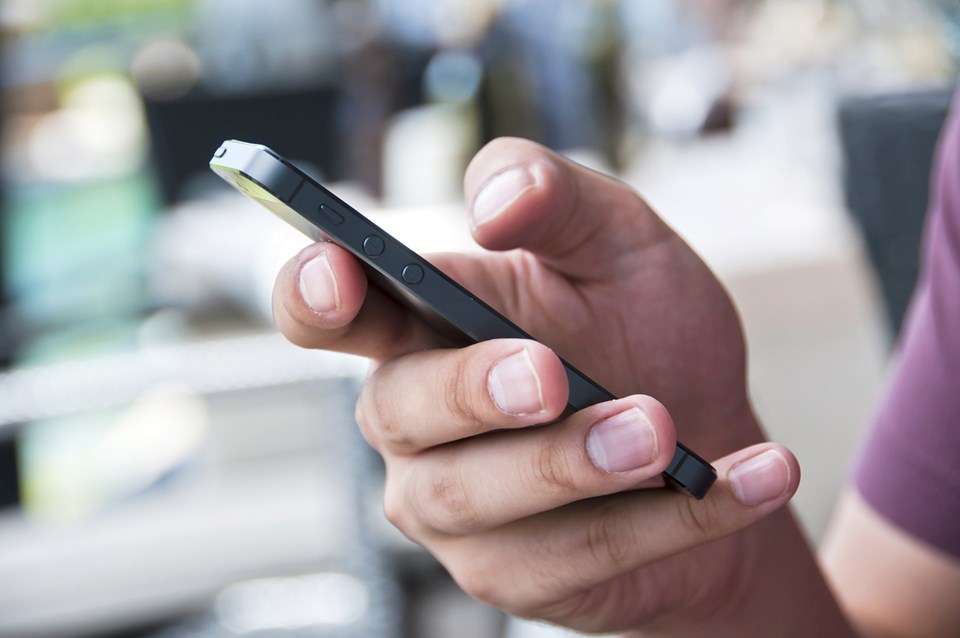A Burnaby physiotherapist is alerting the public to a growing scourge among cell-phone users – texting thumb.
Physiotherapist Shaila Jiwa, owner of Absolute PhysioCare & Sports Rehab, says more and more people are coming into her Burnaby clinic complaining of serious, sometimes debilitating pain in their thumbs.
“A lot of people don’t know why they’re having this pain,” she told the NOW. “We don’t see them in the early stages; we see them in the later stages because then it becomes a functional limitation for them. They can’t hold their cup of coffee, it’s hurting so much. They can’t brush their teeth; they have to use their other hand.”
Jiwa blames new, larger cell phones for the spike in thumb problems.
Because of the phones’ size, she said, many of her clients have started using them for tasks they would previously have done on laptops or computers.
The larger devices also put more strain on thumbs, she said.
“I think it’s the size, the weight and the stress that it’s putting on the thumb to go to the opposite end of the screen,” she said. “It’s just putting more stress on the joint.”
Texting thumb and “gamer’s thumb” are street names for de Quervain syndrome, basically a tendonitis of the extensor tendons used to lift the thumb, according to certified professional ergonomist Anne-Kristina Arnold.
Symptoms include pain or tingling; weak grip or pinch strength; and minor swelling at the base of the thumb.
“It’s been around for a long time, 50 years or so,” Arnold told the NOW. “Originally a lot of it was from hand tools where you’re reaching or hyperextending your thumb to operate a button. In more recent years, it was the little mini joysticks, thumb joysticks, which were a problem.”
Arnold, a senior lecturer in SFU’s biomedical physiology kinesiology department who also teaches in the industrial design program at the Emily Carr University of Art and Design, is reluctant to blame the rise in thumb problems exclusively on the size of the new phones.
“It depends how they actually hold it,” she said. “But what you can say is if the phone causes you to extend your thumb more and your reach more, then they may be related. Small hands on large phones is going to be more of a problem.”
Texting thumb, according to Arnold, is just one symptom of cell phone manufacturers – and companies generally – not paying attention to the way the body works when designing new products.
“If you look at the basic form of a cell phone, it’s still a rectangle, and our bodies don’t move at right angles,” she said. “They move in spherical or what we call more organic kind of shapes. If you move your thumb, if you swivel your thumb, it makes a semi-circle; it doesn’t make a line.”
Once texting thumb or de Quervain’s syndrome takes hold, according to Arnold, it’s tough to treat.
“It can be extremely painful, and like any tendonitis it’s really hard to get rid of,” she said. “It’s inflammation on the tendon, and basically you need to rest, but so much of our life involves moving our – in this case – thumbs around, that it is really hard to get rid of.”
To treat texting thumb, Arnold recommends rest, ice, compression and non-steroidal anti-inflammatories.
Jiwa recommends a simple exercise: 1. Put your hand out as if you are going to shake hands. 2. Bend your wrist away from your thumb. 3. Use your other hand to passively flex your thumb down towards the ground.
If the pain persists, she recommends consulting with a licensed physiotherapist, chiropractor or massage therapist.
To prevent texting thumb:
- Avoid texting with the same hand that’s holding the phone
- Get a phone that fits your hand comfortably
- Use voice dictation as much as possible
- Avoid lifting and stretching your thumb while texting



